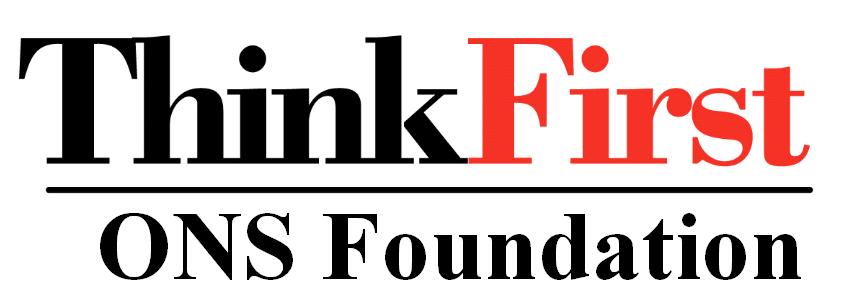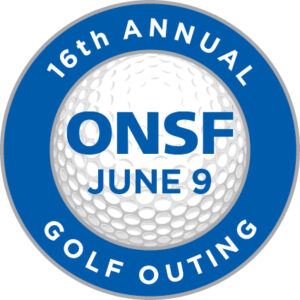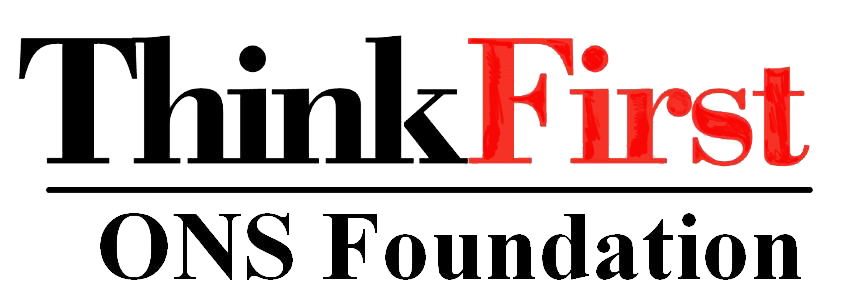ThinkFirst

ThinkFirst is a non-profit National Injury Prevention Foundation dedicated to preventing brain, spinal cord and other traumatic injuries through the education of individuals, community leaders and the creators of public policy. Formally known as the National Head and Spinal Cord Injury Prevention Program, it was first implemented nationally in 1986.
ThinkFirst ONSF is a chapter of the ThinkFirst National Injury Prevention Foundation. The role of local chapters is to work with teachers, educators and communities to reduce the risk of brain and spinal cord injury through education and community outreach.
Each locally established program is sponsored by a neurosurgeon committed to public education and injury prevention. ThinkFirst ONSF is sponsored by Scott Simon, MD, MPH of ONSF.
ThinkFirst and ONSF Programs
ThinkFirst‘s programs are designed to help people of all ages develop lifelong safety habits to minimize the risk of sustaining brain, spinal cord or other traumatic injuries. ONSF implements programs structured around these goals.
ThinkFirst for Kids: This program targets children in grades 1-3. It covers six main topics: introduction to the brain and spinal cord anatomy; vehicle, water, bicycle, sports and recreational safety; as well as safety around weapons and creative problem-solving. It is presented in a classroom format and is fully integrated into the classroom activities. The learning experience is fun, yet meaningful.
ThinkFirst for Youth: This program targets children in grades 4-8. Like the Kids program, it covers brain and spinal cord anatomy; vehicle, water, bicycle, sports and recreational safety; as well as safety around weapons and creative problem-solving. It is presented in a classroom format and is fully integrated into the classroom activities.
ThinkFirst for Teens: This program targets middle and high school students. It addresses injury prevention by focusing on the underlying behaviors that lead to injury. It explores issues such as peer pressure, risk taking, conflict resolution, and substance abuse, particularly as they relate to violence, motor vehicle safety, and sports/recreation safety.







